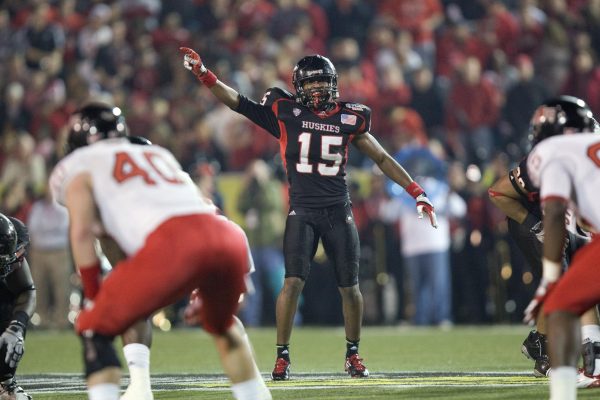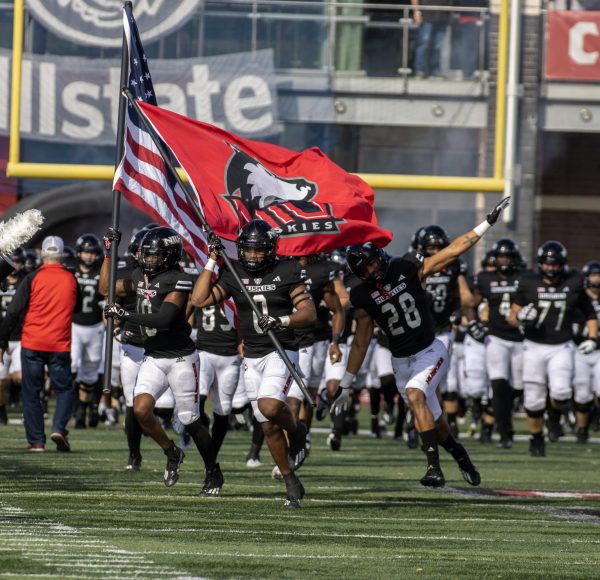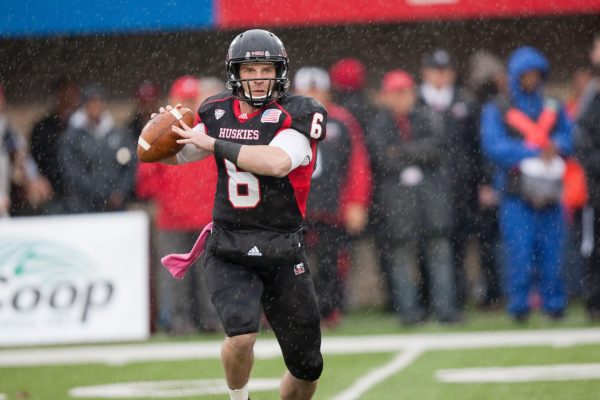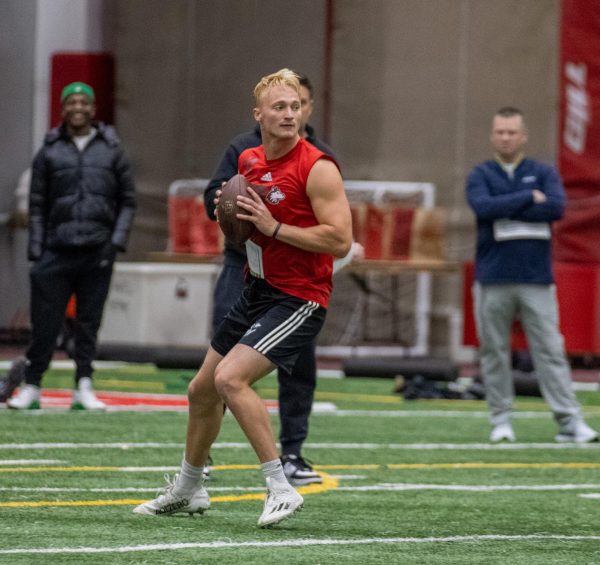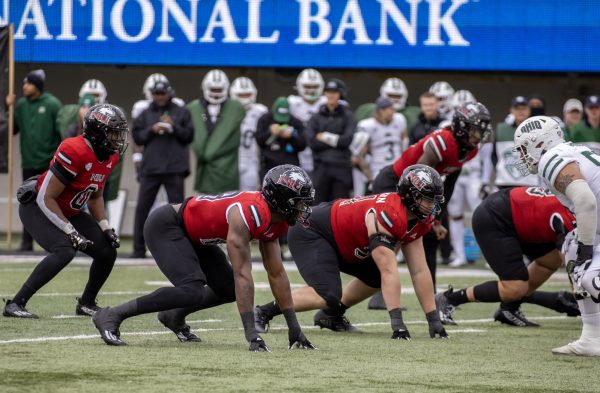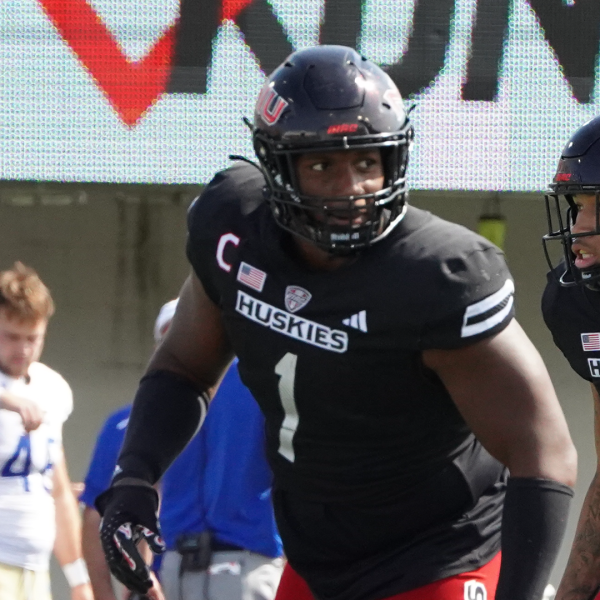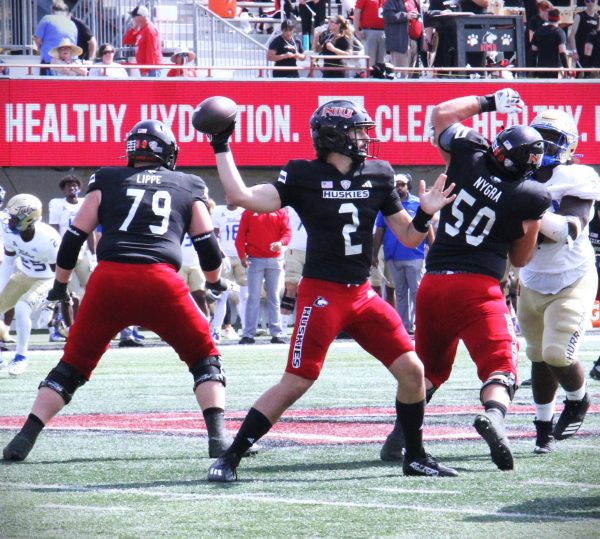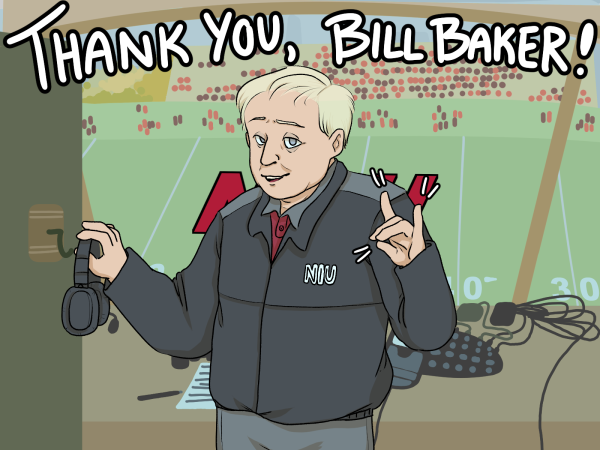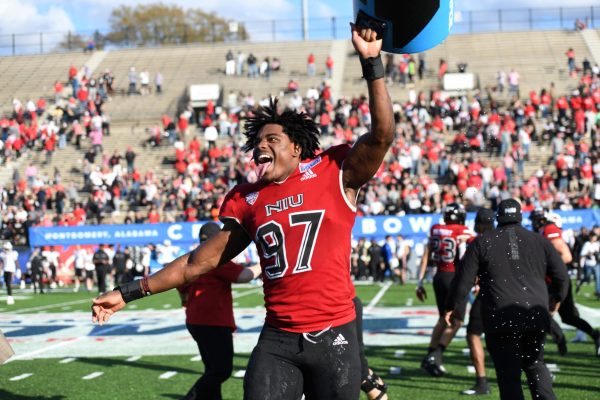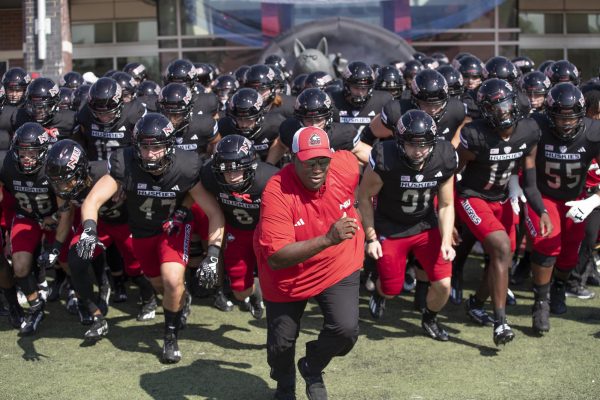Run-and-shoot: the passing option
November 1, 1989
On paper, the wishbone and the run-and-shoot offenses don’t have a lot in common. In many ways though, they are quite similar.
Whereas the wishbone is primarily a running offense, the run-and-shoot features the pass. Both, however, are option offenses.
This Saturday, when the Huskies host Southwestern Louisiana, the Ragin‘ Cajuns will showcase their version of the latest fad in football offenses—the run-and-shoot.
“The run-and-shoot is the passing game version of the wishbone. It’s an option-throwing game where the wishbone is the ultimate running option game,” NIU offensive coordinator Mike Summers said in analyzing the run-and-shoot.
The run-and-shoot utilizes four receivers, one running back, and it relies heavily on a multi-dimensional quarterback, something the Cajuns have in standout quarterback Brian Mitchell. In his fourth season of quarterbacking the run-and-shoot at USL, Mitchell has thrown for more than 4,000 yards and rushed for more than 2,500 yards—the only player in NCAA history to accomplish that feat.
With some run-and-shoot teams, the ball is passed up to 60 or 70 times a game, but there are other teams that like to maintain a balance between the running and passing games.
“There are a lot of different versions of the run-and-shoot. We try to incorporate more running,” said USL head coach Nelson Stokley. “We try to be as balanced as we can. We’re averaging about 190 yards rushing and 200 yards passing.”
USL uses two wide receivers, two slotbacks and a fullback, all of which can be receivers on any given play. What USL does that is different than the conventional run-and-shoot is use the slotbacks as pitchmen while running the option.
The receivers will run a variety of routes depending on the way the defense is playing them. The receivers often will choose their routes right before the ball is snapped.
For defenses, stopping this unpredictable offense can be tough because of the nature of the spread-out formation.
“They have three options on every play. You have to make sure you are balanced defensively to stop them on both sides of the formation,” NIU defensive coordinator Tim McGuire said.
One of the biggest keys for the run-and-shoot is its tendency to neutralize a good defensive pass rush and exploit a poor defensive backfield. Many times the quarterback throws the ball before the defensive rush has a chance to get started and that, added to the threat of quick receivers, makes it doubly tough on defenses.
“It’s a quick game and has the opportunity to nullify good defenses, and it does one thing that a lot of people want and that’s to see the ball in the air,” Summers said.
The run-and-shoot is building in popularity, as exhibited by the Detroit Lions of the NFL, who are running the “silver stretch”, another version of the offense.


